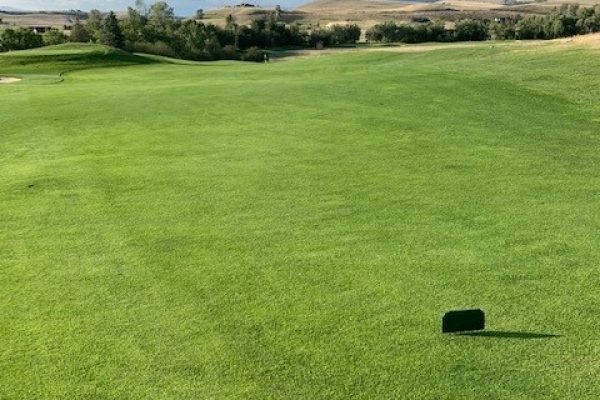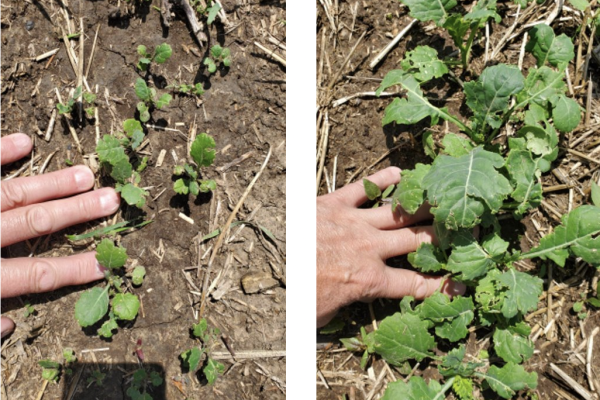The global food supply looks grim without altering agricultural practices to preserve soil.
Nutrient imbalance, pollution, waterlogging, loss of soil biodiversity, and increasing salinity have affected soil across the globe. The world grows 95 percent of its food in the uppermost layer of the soil. As the layer of fertile topsoil thins, it gets increasingly challenging to grow crops – adding to fears of global food shortages as the world’s population reaches eight billion.
Climate change, deforestation, and increased industrial activity have accelerated the loss of soils in almost every country. But farmers are plowing through that resource at an even more alarming rate. About 40 percent of the world’s land has already been taken over by agriculture, while livestock grazing and expanding urban areas take further chunks out of what is left.
At first glance, it might seem that there is no shortage of mud and dirt. But it’s the quality of soil that matters.
To naturally regenerate high-quality, fertile topsoil takes centuries. Yet conventional farming practices continue to destroy soil’s natural structure every year. Entire civilizations have collapsed due to soil exhaustion.
Generations of traditional agriculture practices and demand have long pursued maximum crop yield. While synthetic fertilizers have aided in this quest for ever-growing productivity, studies have discovered the unfortunate effects of using such chemicals on soils, plants, and humanity.
Negative environmental impacts
Our dependence on synthetic fertilizer and other chemical inputs is equivalent to eating only vitamins instead of a whole, balanced diet. While soil inputs like phosphorus and potassium are essential nutrients for growth, they can have some harmful side effects if not applied correctly.
Phosphorus runoff from synthetic fertilizer has contributed to the algae bloom in Lake Erie and contaminated Toledo, Ohio’s drinking water. Moreover, before being used in fertilizer, phosphate rock requires processing in the form of phosphoric acid. The U.S. Environmental Protection Agency estimates that for every ton of phosphoric acid the mines make, it creates over five tons of phosphogypsum. Often stored in retention ponds, phosphogypsum can become unstable under heavy rainfall.
Potassium chloride (KCl) is widely used in agriculture as the concentration of K is high. So is the chloride concentration – one kg of KCl is equivalent to eight liters of Clorox bleach. That’s equivalent to dumping 460 billion liters of bleach into the world’s soils annually.
Additionally, crops only use half of all applied phosphorus and one-third of applied nitrogen – the rest ends up in groundwater, further contaminating natural environments.
Salt kills soil
Conventional chemical fertilizers are all salt-based and pH-altering. They are soil biodiversity’s worst enemy, depleting essential organic matter and key nutrients. As synthetic fertilizer changes the pH of the soil, it becomes more acidic and susceptible to disease and less able to withstand changing moisture conditions.
Moreover, when salt concentrations in soil are high, water transferring from the soil to the root is slowed. This sometimes leads the soil to draw water from the root, causing crops to wilt and die.
Conventional fertilizers are costly
The yield-only has been destructive to the farmer’s bottom line and ultimately destructive to the soil upon which farming depends.
The soil doesn’t function appropriately in a chemical-dependent farming system. Microbes, bacteria, and fungi are not performing as they should be and producing organic matter. Farmers are left with unhealthy soils that are less productive – which in turn require more chemicals to build up crop yield.
Synthetic fertilizers can also make plants weaker over time, making them more susceptible to insects and diseases, again, requiring more inputs. See the cycle?
Regenerative fertilizers outperform synthetic counterparts
Our efforts to control nature often backfire. We need to work with the natural system instead of fighting against it. The world needs to stop choosing between yield and soil health – fortunately, we have the resources to do just that.
Companies like Replenish Nutrients have heavily invested in research to develop fertilizers that heal the soil while producing equivalent results. Treating both crops and the soil that sustains them makes regenerative fertilizers better than their synthetic counterparts.
A healthy opportunity
Through our sister company, Replenish Nutrients, we help advance regenerative agriculture practices to build a profitable and sustainable farming future. We know the positive impact of regenerative practices are improving soil health, increased biodiversity, better water quality, and a need for less water.
We are growing to meet the demand for regenerative fertilizer solutions that offer high-quality plant-available nutrients while improving long-term soil health. Learn more about our growth plan and how we’re creating healthier ecosystems.


